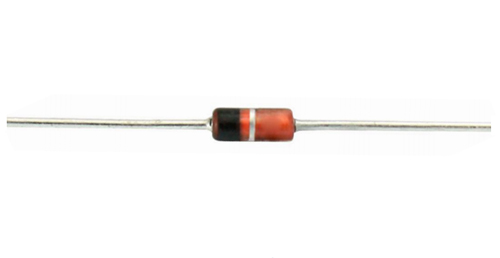HARDWARE DESCRIPTION
MICRO CONTROLLER
P89V51RD2 is an 80C51 micro controller with 64 KB Flash and 1024 bytes of data RAM. The P89V51RD2 device contains a non-volatile 16kb/32kb/64kb flash program memory that is both parallel programmable and serial in-system and in-application programmable.
IN-System programming (ISP) allows the user to download new code while the micro controller sits in the application. In-Application Programming (IAP) means that the micro controller fetches new program code and reprograms itself while in the system.
An OTP configuration bit lets the user select conventional 12 clock timing if desired. This device is a single-chip 8-bit micro controller manufactured in advanced CMOS process and is a derivative of the 80c51 micro controller family. The instruction set is 100% compatible with the 80c51 instruction set. The device also has four 8-bit I/O ports, three 16-bit timer/event counters, a multi-source, Four-priority-level, nested interrupt structure, an enhanced UART and on-chip oscillator and timing circuits. The added features of the p89v51rd2 makes it a powerful micro controller for applications that require pulse width modulation, high-speed I/O and up/down counting capabilities such as motor control.
This allows for remote programming over a modem link. A default serial loader (boot loader) program in ROM allows serial in-system programming of the flash memory via the UART without the need for a loader in the flash code. For in-application programming, the user program erases and reprograms the flash memory by use of standard routines contained in ROM. This device executes one machine cycle in 6 clock cycles, hence providing twice the speed of a conventional 80c51.
A key feature of the P89V51RD2 is its X2 mode option. The design engineer can choose to run the application with the conventional 80C51 clock rate (12 clocks per machine cycle) or select the X2 mode (6 clocks per machine cycle) to achieve twice the throughput at the same clock frequency. Another way to benefit from this feature is to keep the same performance by reducing the clock frequency by half, thus dramatically reducing the EMI. The capability to field/update the applicationfirmware makes a wide range of applications possible
FEATURES
Ø 80C51 Central Processing Unit.
Ø 5 V Operating voltages from 0 to 40 MHz.
Ø 64 kb of on-chip Flash program memory with ISP (In-System Programming) and IAP (In-Application Programming).
Ø Supports 12-clock (default) or 6-clock mode selection via software or ISP.
Ø SPI (Serial Peripheral Interface) and enhanced UART.
Ø PCA (Programmable Counter Array) with PWM and Capture/Compare functions.
Ø Four 8-bit I/O ports with three high-current Port 1 pins (16 mA each).
Ø Three 16-bit timers/counters.
Ø Programmable Watchdog timer (WDT).
Ø Eight interrupt sources with four priority levels
Ø Second DPTR register.
Ø Low EMI mode (ALE inhibit).
Ø TTL- and CMOS-compatible logic levels
Ø Brown-out detection.
Ø Low power
Ø PDIP40,PLCC44 and TQFP44 packages
POWER ON RESET
(POR) is ensuring that the processor starts at a known address when power is first applied. To accomplish that task, the POR logic output holds the processor in its reset state when the processor's power supply is first turned on. The POR's second task is to keep the processor from starting its operation from that known address until three events have occurred: the system power supplies have stabilized at the appropriate levels; the processor's clock(s) has (have) settled; and the internal registers have been properly loaded. The POR accomplishes this second task through an onboard timer, which continues to hold the processor in its reset state for a prescribed period of time. That timer triggers after the processor's power supply reaches a specific voltage threshold. After a set time elapses, the timer expires, causing the POR output to become inactive, which in turn makes the processor come out of reset and begin operation.
liquid-crystal display
A liquid-crystal display (LCD) is a flat panel display, electronic visual Crystals display, or video display that uses the light modulating properties of liquid. Liquid crystals do not emit light directly. LCDs are available to display arbitrary images (as in a general-purpose computer display) or fixed images with low information content which can be displayed or hidden, such as preset words, digits, and 7-segment displays as in a digital clock.
Buzzer
Electronic symbol for a buzzer
A buzzer or beeper is an audio signaling device,[1] which may be mechanical, electromechanical, or piezoelectric. Typical uses of buzzers and beepers include alarm devices, timers, and confirmation of user input such as a mouse click or keystroke.
Type of buzzers
Electromechanical
Early devices were based on an electromechanical system identical to an electric bell without the metal gong. Similarly, a relay may be connected to interrupt its own actuating current, causing the contacts to buzz. Often these units were anchored to a wall or ceiling to use it as a sounding board. The word "buzzer" comes from the rasping noise that electromechanical buzzers made.
Mechanical
A joy buzzer is an example of a purely mechanical buzzer. They require drivers.
Piezoelectric
A piezoelectric element may be driven by an oscillating electronic circuit or other audio signal source, driven with a piezoelectric audio amplifier. Sounds commonly used to indicate that a button has been pressed are a click, a ring or a beep. A piezoelectric buzzer/beeper also depends on acoustic cavity resonance or Helmholtz_resonance to produce an audible beep
COMPONENTS USED
• Microcontroller
• GSM Module
• Buzzer
• GPS Module
• Keys
• Alpha numeric LCD 16x2
SOFTWARES USED
• Embedded C
• Keil Compiler
• Orcad Capture
• Flash Magic
• HyperTerminal
ADVANTAGES:
• 32 bit ARM core for faster response.
• Very efficient and accurate system
• Low cost
• Low Bandwidth
APPLICATION:
• Used for vehicle tracking.
• Used for material tracking.






No comments:
Post a Comment